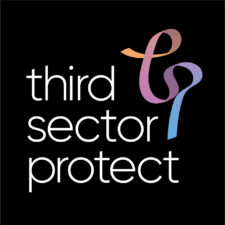
The 7 Awesome Principles Of The Charity Governance Code
In recent years, public trust and confidence in charities has hit all-time lows, according to the Charity Commission. Adopting good governance practices, which enable charities to comply with the law, is central to regaining the public’s trust. To help charities develop high standards of governance, a Charity Governance Code steering group, observed by the Charity Commission, updated the Charity Governance Code on 13 July 2017.
The code is comprised of seven distinct sections. While not a legal or regulatory requirement, the code outlines beneficial principles and recommended practices for good governance.
The Responsibilities of a Trustee
The revised Charity Governance Code clearly outlines the roles of an organisation’s trustees and their importance, which include the following:
- Trustees are committed to their organisation’s cause and have joined its board because they want the charity to succeed in its goals.
- Trustees recognise that the organisation’s work is an ongoing process that requires diligent attention and effort.
- Trustees understand their roles within the organisation and their legal responsibilities to it. This includes having read the Charity Commission’s guidance, The Essential Trustee and their organisation’s governing document.
- Trustees are committed to good governance and contributing to their organisation’s continued improvement.

The 7 Principles of the Charity Governance Code
The code is organised according to seven distinct principles, with each principle containing key outcomes as well as recommended practices that differ according to whether a charity is large or small. The seven principles of the revised Charity Governance Code are:
1) Organisational Purpose
The organisation’s board clearly outlines the charity’s goals and works to ensure that those aims are successfully realised. The key outcomes of this section are as follows:
1.1) The board has a shared understanding of and commitment to the charity’s purposes and can articulate those clearly.
1.2) The board can demonstrate that the charity is effective in achieving its charitable purposes and agreed outcomes.

2) Leadership
The organisation has an effective board that provides strategic leadership to ensure that the charity is able to achieve its goals. The key outcomes of this section are as follows:
2.1) The board and its trustees accept the collective responsibility to ensure that the organisation has a clear, relevant set of goals. Each goal has a detailed strategy on how to achieve it.
2.2) The board agrees to the organisation’s vision, values and reputation. In addition, anyone that represents the charity must positively reflect the organisation’s values.
2.3) The board ensures that the organisation’s values are reflected in all of its efforts. The ethos and culture of the charity must be the basis of all its activities.
3) Integrity
The organisation’s board acts with integrity by adopting values to create a culture that helps achieve the charity’s goals. As the board is accountable for the organisation’s actions and decisions, it understands the importance of maintaining the public’s confidence and trust. The key outcomes of this section are as follows:
3.1) The board always acts in the best interests of the organisation and its beneficiaries. In addition, the board will not be unduly influenced by special interest groups that place personal interests above those of the charity. The board—collectively—is independent in its decision-making.
3.2) The board safeguards and promotes the organisation’s reputation and promotes public confidence.
3.3) Members of the board as well as those representing or employed by the charity act with integrity.
4) Decision-making, risk and control
The organisation’s board ensures that its decision-making methods are informed, rigorous and timely. This process must be based upon effective delegation, risk management and control while being routinely monitored. The key outcomes of this section are as follows:
4.1) The board understands that its central focus is on strategy, performance and assurance, rather than on operational matters.
4.2) The board has established an effective decision-making and monitoring framework to help the organisation achieve its charitable goals. In addition, the board is aware of the financial and non-financial risks to the organisation and has practices in place to monitor and manage them.
4.3) The board promotes a balanced culture of managing resources while understanding that being overcautious can curb innovation.
4.4) The board is still responsible for the aspects of its responsibilities that it delegates to committees, staff, volunteers or contractors. This includes any incidents that arise due to oversight.
5) Board effectiveness
The organisation’s board works as a cohesive and effective team by using a balance of skills, experience, backgrounds and knowledge to make informed decisions. The key outcomes of this section are as follows:
5.1) The board’s culture, behaviours and processes help it to be effective and resolve challenges and different views.
5.2) All trustees possess the appropriate skills along with knowledge on the charity and enough time to be effective in their roles.
5.3) The chair enables the board to work as an effective team by developing strong working relationships between the members of the board. This includes creating a culture to air and resolve differences.
5.4) The board makes decisions collectively and confidently.

6) Diversity
The organisation’s board supports an approach to diversity that encourages effectiveness, leadership and decision-making. The key outcomes of this section are as follows:
6.1) The board adheres to the belief that it is more effective if it includes a variety of perspectives, experiences and skills.
6.2) The board ensures that the organisation adheres to the principles of equality and diversity, and goes beyond the legal minimum when appropriate.
7) Openness and accountability
The organisation’s board leads the charity by being transparent and accountable in its actions. The key outcomes of this section are as follows:
7.1) The organisation’s stakeholders agree on its actions and the impact that they have.
7.2) The board ensures that the organisation’s performance and interaction with stakeholders are guided by the values, ethics and culture established by the board. In addition, trustees ensure that the organisation collaborates with stakeholders to promote ethical conduct.
7.3) The organisation takes its responsibility for building public trust and confidence seriously.
7.4) The organisation’s beneficiaries and stakeholders view the charity as having legitimacy in representing their interests.
Thorough Guidance Leads to Success
The revised Charity Governance Code promises to empower charities and help them achieve their goals. While your organisation is not required to adopt the guidance and best practices outlined in the code, doing so can better prepare you for success.
If you would like to review the Charity Governance Code in its entirety, you can find it by clicking here.
For more information about how you can bolster your charity, contact the insurance professionals at ThirdSectorProtect today on 0800 877 8277 and one of our expert team will be happy to help.
Fancy reading more? Why not check out these other useful articles?
- Guide to employing & insuring volunteers.
- How to recruit and manage volunteers in your organisation.
- Volunteering Law- Explained
For more tips and tricks on all things related to charities, not-for-profits and community groups, follow us on Facebook, Twitter & LinkedIn.
 |  |  |  |








